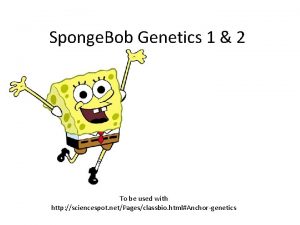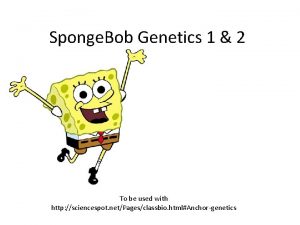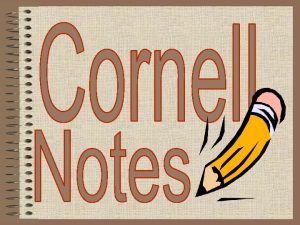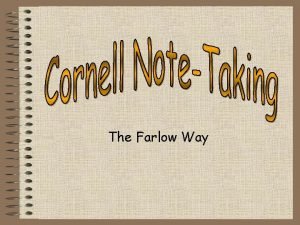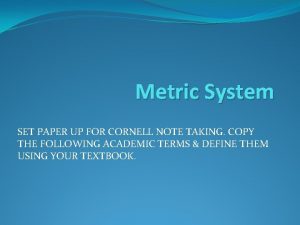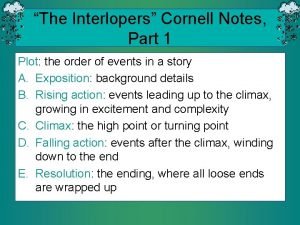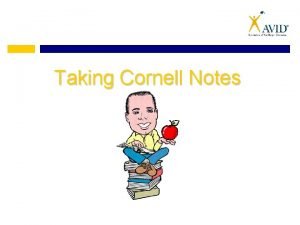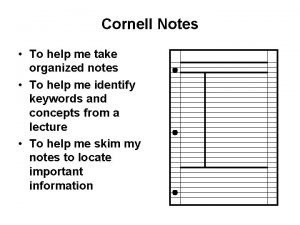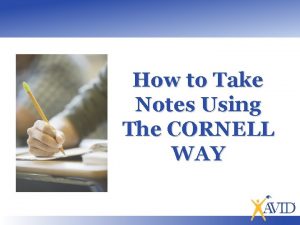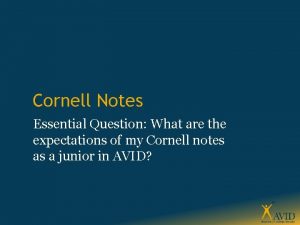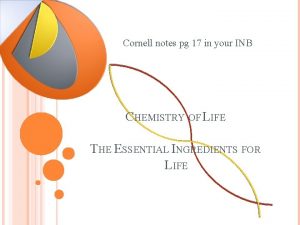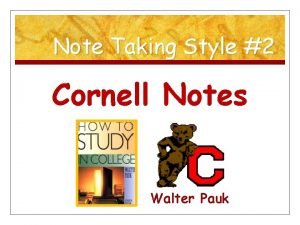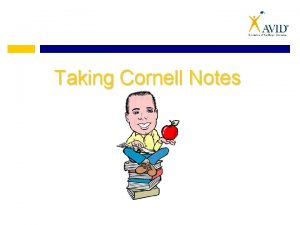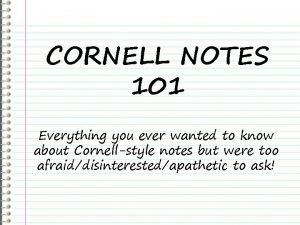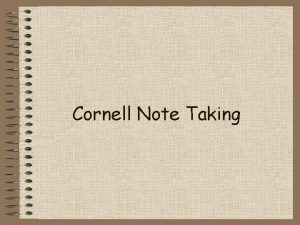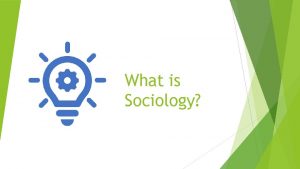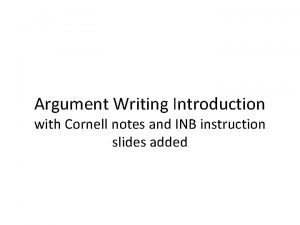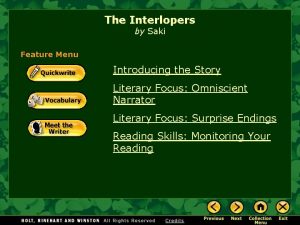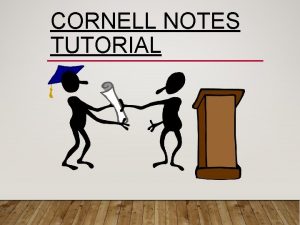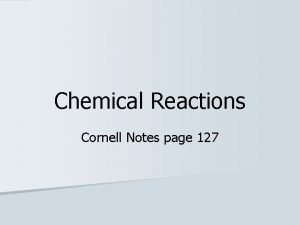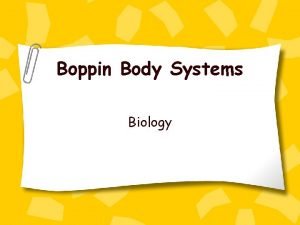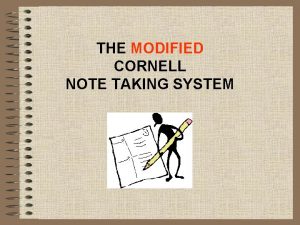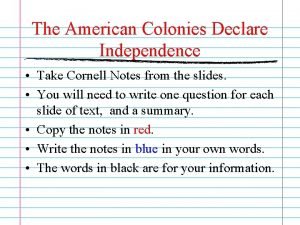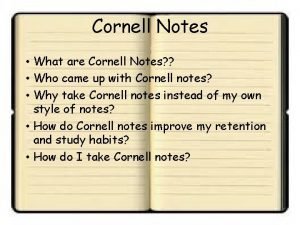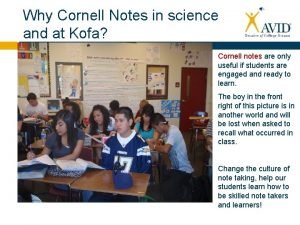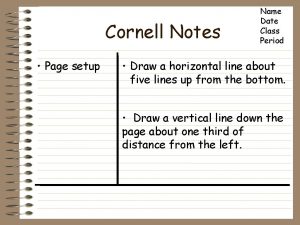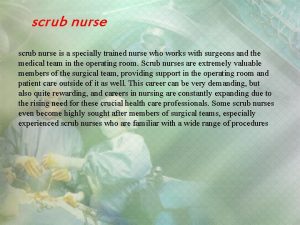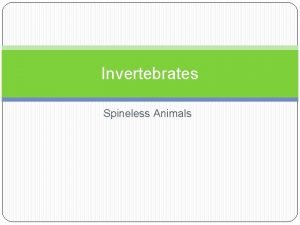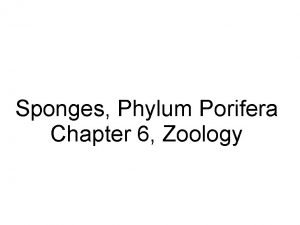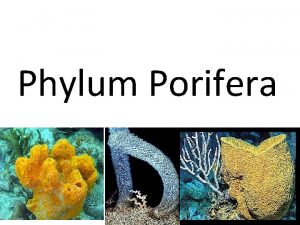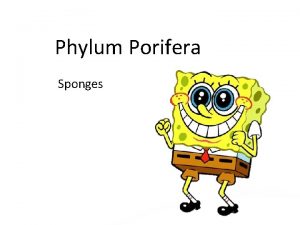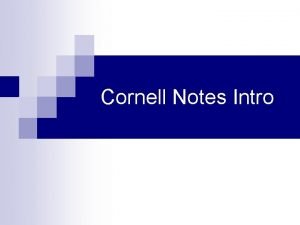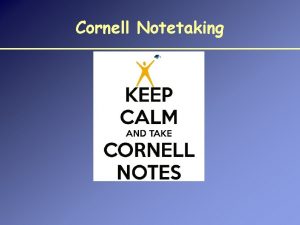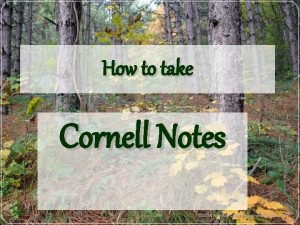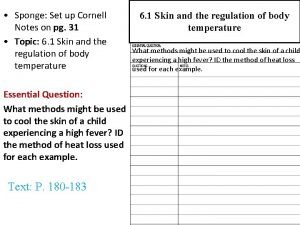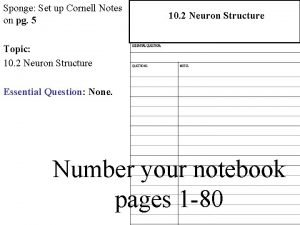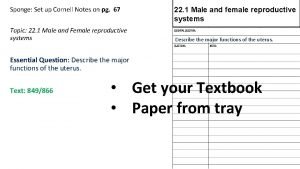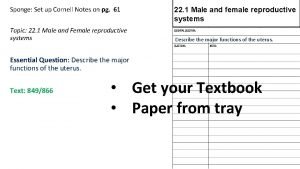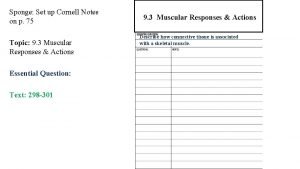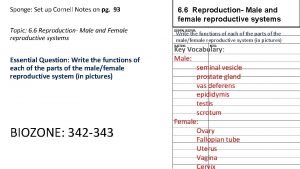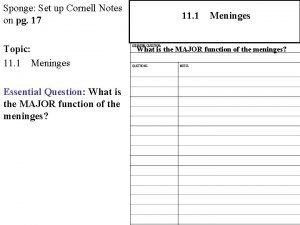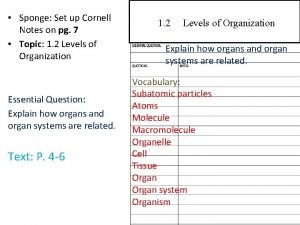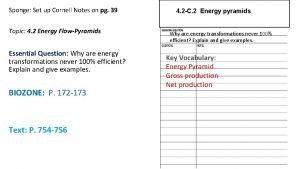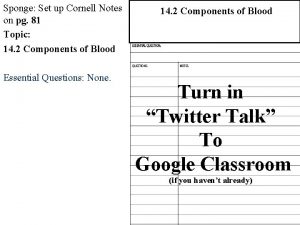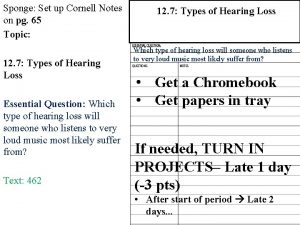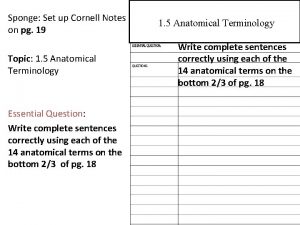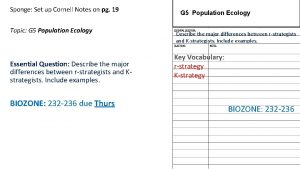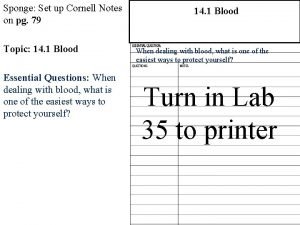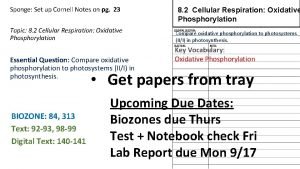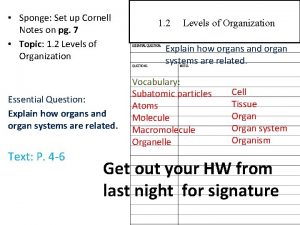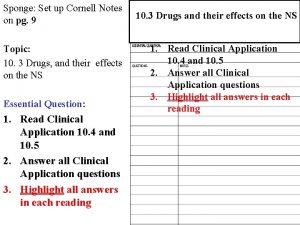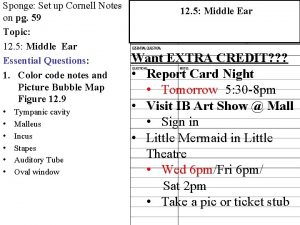Sponge Set up Cornell Notes on pg 31













































- Slides: 45

Sponge: Set up Cornell Notes on pg. 31 Topic: 11. 5 Other Major Parts of the brain Essential Question: None Text: 407 -410 11. 5 Other Major Parts of the Brain 2. 1 Atoms, Ions, and Molecules

Homework Clinical Application 11. 4 -5 • Read • HIGHLIGHT • Answer Questions 2

Objective SWU: the location and function of the diencephalon, brainstem, and cerebellum SW: Make a tree map on the parts of the brainstem + illustrations

Diencephalon The Diencephalon is located between cerebral hemispheres and above the brainstem. • Largely composed of gray matter Includes: • Thalamus • Hypothalamus • Epithalamus • Pineal gland 4

Internal Structure of the brain Diencephalon 5

Diencephalon Thalamus Hypothalamus 6

Diencephalon Thalamus: is the gateway for sensory impulses heading to cerebral cortex • Receives all sensory impulses (except smell) • Channels impulses to appropriate part of cerebral cortex for interpretation 7

Diencephalon Hypothalamus maintains homeostasis by regulating internal activities • Heart rate/ blood pressure • Body temp • Control of hunger/ bodyweight/ digestion • Pituitary gland/growth • Sleep/wakefulness • Links nervous and endocrine systems 8

Diencephalon Epithalamus is responsible for connecting the lymbic system to the rest of the brain • Regulates hormones secreted by the pineal gland • Secretes melatonin, the hormone responsible for sleepiness, to induce normal sleep cycles. 9

Diencephalon Video 2 m 4 s-3 m 50 s 10

Structures in the region of the diencephalon are also important in controlling emotional responses: Limbic System: Controls emotional experience and expression and can modify the way a person acts, producing feelings such as fear, Olfactory bulb anger, pleasure, and sorrow • Reacts to life-threatening upsets • Guides behavior that may increase the chance of survival • Interpret sensory impulses from the receptors associated with the sense of smell • Ex: the smell of baking cookies reminds you of your grandmother 11

Cerebellum: • Integrates sensory information concerning position of body parts • Coordinates skeletal muscle activity • Maintains posture • Receives sensory impulses from receptors in muscles, tendons, joints, and the eyes and ears • Damage to the cerebellum may result in tremors, inaccurate movements, loss of muscle tone, loss of equilibrium 12

Cerebellum Video 46 s-2 m 41 s • Video notes (5 bullets) 13

p. 30 The Brainstem Types of Sleep 14

Brain Stem 15

The Brainstem Pg. 30 Midbrain Pons Medulla Oblongata

Pg. 30 Midbrain S E R U S T f C o ION I P T C N FU The Brainstem Pons S E R U S T f C o ION I P T C N FU *At least 6 illustrations Medulla Oblongata S E R U S T f N C o IO I P T C N FU

Midbrain (mesencephalon): Location- Between diencephalon and pons • Connects lower parts of brainstem/ spinal cord with higher part of brain Contains reflex centers: • move the eyes to view something as the head turns • move head to hear sounds more distinctly • controls reflexes that maintain posture 18

Pons: Location- Between medulla oblongata and midbrain • Relays nerve impulses to and from medulla oblongata and cerebrum • Helps regulate rate and depth of breathing 19

Medulla Oblongata: Enlarged continuation of spinal cord • Conducts impulses between brain and spinal cord • Contains cardiac (heart rate), vasomotor (blood pressure), and respiratory control centers (rate, rhythm, and depth of breathing) • Contains various non-vital reflex control centers (coughing, sneezing, swallowing, vomiting) • INJURIES HERE ARE OFTEN FATAL 20

Reticular Formation: Complex network of nerve fibers scattered throughout the brain stem • Arouses cerebral cortex into state of wakefulness • without this stimulation, the cortex remains unaware of stimulation • Decreased activity leads to sleep! 21

Types of sleep Slow Wave • Non-REM sleep • Restful • Dreamless • Reduced blood pressure and respiratory rate • Ranges from light to heavy • Alternates with REM sleep Rapid Eye Movement (REM) • “Paradoxical” (unusual) sleep • Some areas of brain active • Heart and respiratory rates irregular • Dreaming occurs • Certain drugs (MJ/alcohol) may interfere with REM 22

Brain waves 23

• Sleep cycles last approx. 90 mins • About 5 in an 8 hr. sleep 24

Crash Course: Know Your Brain 4 m 55 -8 m 33 • 10 bullets https: //www. youtube. com/watch? v=v. Hrmiy 4 W 9 C 0

Taping Time 16: Meninges ½ sheet/ Meningitis case study/ Curious Case of Phineas Gage 18: Ventricles and CSF 20: Reflex Arc ½ sheet/ Lab 26 22: Clinical Apps 11. 2 -3/ Lab 27 24: Brain Pic Bubb-Map 26: Functions of the cerebral lobes / Clinical App 11. 4 -5 28: Hemispheres of Brain ½ sheet 26

Sponge: Set up Cornell Notes on pg. 11. 5 Reticular Formation and Sleep 2. 1 Atoms, Ions, and Molecules Topic: 11. 5 Reticular Formation and Sleep Essential Question: Text: 407 -410 HAD TO CUT FOR TIME 2017

Reticular Formation: Complex network of nerve fibers scattered throughout the brain stem • Arouses cerebral cortex into state of wakefulness • without this stimulation, the cortex remains unaware of stimulation • Decreased activity leads to sleep! 28

Types of sleep Slow Wave • Non-REM sleep • Restful • Dreamless • Reduced blood pressure and respiratory rate • Ranges from light to heavy • Alternates with REM sleep Rapid Eye Movement (REM) • “Paradoxical” (unusual) sleep • Some areas of brain active • Heart and respiratory rates irregular • Dreaming occurs • Certain drugs (MJ/alcohol) may interfere with REM 29

P. 28 Sleep Disorders Crash Course: Sleep and Dreams: (10 bullets) Sleep paralysis: (5 bullets)

Brain waves 31

• Sleep cycles last approx. 90 mins • About 5 in an 8 hr. sleep 32

Bottom of 32 Sleep Disorders What are some sleep disorders you may have heard of? Sleep Apnea Sleep Walking Narcolepsy Insomnia Night Terrors Sleep Talking 33

Insomnia: Inability to fall or remain asleep (10% of population) Narcolepsy: Abnormal REM sleep causes EXTREME daytime sleepiness (. 02 -. 06% of population) Sleep Apnea: Upper airway collapses repeatedly during sleep, blocking breathing. Snoring and daytime sleepiness 34

Parasomnias: Parasomnias are disruptive sleep disorders that can occur during arousals from REM sleep or partial arousals from non-REM sleep. • • Nightmares Night terrors Sleep walking Sleep talking Restless leg syndrome Sleep bruxism (grinding teeth) Sleep enuresis (bed wetting) Sleep paralysis What is it? When does it occur? 35

Nightmares v. Night Terrors A night terror is a partial waking from sleep with behaviors such as screaming, kicking, panic, sleep walking, thrashing, or mumbling. They are harmless and each episode will end in deep sleep. The following are common characteristics of a night terror: • Your child is frightened but cannot be awakened or comforted. • Your child's eyes are wide open but he or she does not know that you are there. • The episode lasts from 10 to 30 minutes. • Your child often does not remember the episode in the morning. 36

Nightmares v. Night Terrors How to help a child during a night terrors: • Try to help your child return to normal sleep. – Do not try to awaken your child. – Make soothing comments. – Hold your child if it seems to help him or her feel better. Shaking or shouting at your child may cause the child to become more upset. • Protect your child against injury. During a night terror, a child can fall down a stairway, run into a wall, or break a window. Try to gently direct your child back to bed. • Try to prevent night terrors. A night terror can be triggered if your child becomes overly-tired. Be sure your child goes to bed at a regular time, and early enough to give him or her enough sleep. Younger children may need to return to a daily nap. 37

Nightmares v. Night Terrors Nightmares are scary dreams that awaken children and make them afraid to go back to sleep. • May happen for no known reason • Sometimes occur when your child has seen or heard things that upset him or her. • These can be things that actually happen or are make-believe. Nightmares often relate to developmental stages of a child: toddlers may dream about separation from their parents; preschoolers may dream about monsters or the dark; school-aged children may dream about death or real dangers. 38

Crash Course: Sleep and Dreams 9 m 40 s • 10 bullets https: //www. youtube. com/watch? v=r. MHus-0 w. FSo 39

Sleep paralysis: Inability to move for up to a few minutes after awakening or when falling asleep • Sleep paralysis is a feeling of being conscious but unable to move • It occurs when a person passes between stages of wakefulness and sleep • During these transitions, you may be unable to move or speak for a few seconds up to a few minutes. • Some people may also feel pressure or a sense of choking. • Sleep paralysis usually occurs at one of two times. If it occurs while you are falling asleep, it's called predormital sleep paralysis. If it happens as you are waking up, it's called postdormital sleep paralysis. • Many people that experience sleep paralysis are struck with a deep sense of terror, because they sense a menacing presence in the room while paralyzed—sometimes referred to as the intruder. 40

41

“The Entity”-Sleep Paralysis 12 m 7 s-14 m 52 s (If time 0 -14 m 52) • https: //www. youtube. com/watch? v=Qmbp. Ouc. NVn 4 42

• The Jawbone Up, monitors the wearer's micro movements while they are asleep, to determine whether they are awake, in light sleep or in deep sleep. This information, together with data on the wearer's movement and eating habits, can then inform the wearer's health and fitness regime. 43

Major Parts of the Brain 44

A Closer Look at the Brain Video (5 m 23 s) 45
 Spongebob's aunt and uncle sponge wilma and sponge wilbur
Spongebob's aunt and uncle sponge wilma and sponge wilbur Spongebob's aunt and uncle sponge wilma and sponge wilbur
Spongebob's aunt and uncle sponge wilma and sponge wilbur How to set up cornell notes
How to set up cornell notes Total set awareness set consideration set
Total set awareness set consideration set Training set validation set test set
Training set validation set test set Cornell notes setup
Cornell notes setup Metric system cornell notes
Metric system cornell notes The interlopers summary
The interlopers summary What do cornell notes look like
What do cornell notes look like How does cornell notes work
How does cornell notes work Cornell notes setup
Cornell notes setup What is the cornell way
What is the cornell way What is the essential question in cornell notes
What is the essential question in cornell notes Chemistry cornell notes
Chemistry cornell notes Walter pauk cornell notes
Walter pauk cornell notes Cornell notes history
Cornell notes history What do cornell notes look like
What do cornell notes look like Cornell notes for anatomy and physiology
Cornell notes for anatomy and physiology Cornell notes advantages
Cornell notes advantages Cornell note setup
Cornell note setup Cornell notes sociology
Cornell notes sociology Cornell notes definition
Cornell notes definition 4 parts of cornell notes
4 parts of cornell notes Point of view in the interlopers
Point of view in the interlopers Cornell notes steps
Cornell notes steps Cornell notes chemistry
Cornell notes chemistry Biology cornell notes
Biology cornell notes Note taking legend
Note taking legend Declaration of independence cornell notes
Declaration of independence cornell notes Cornell notes setup
Cornell notes setup Ions and ionic bonding cornell doodle notes
Ions and ionic bonding cornell doodle notes Cornell notes rubric
Cornell notes rubric Cornell notes setup
Cornell notes setup Crisp set vs fuzzy set
Crisp set vs fuzzy set Crisp set vs fuzzy set
Crisp set vs fuzzy set Bounded set vs centered set
Bounded set vs centered set What is the overlap of data set 1 and data set 2?
What is the overlap of data set 1 and data set 2? Fuzzy theory
Fuzzy theory The function from set a to set b is
The function from set a to set b is Set off and carry forward of losses notes
Set off and carry forward of losses notes Cube wisc
Cube wisc Responsibilities of a scrub nurse
Responsibilities of a scrub nurse The simplest kind of invertebrates
The simplest kind of invertebrates Phylum porifera structure
Phylum porifera structure General characters of porifera
General characters of porifera Sponge body plan
Sponge body plan
